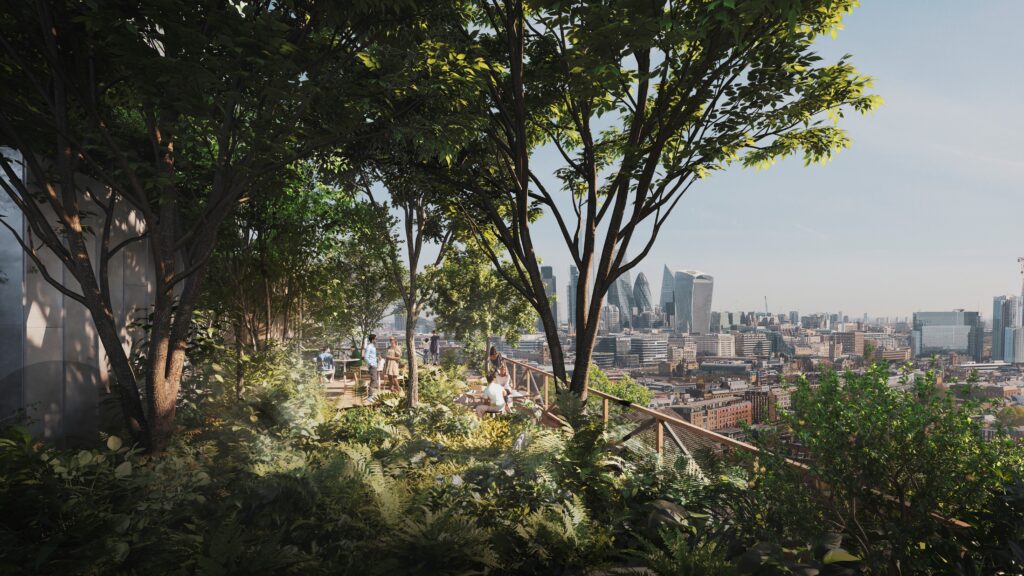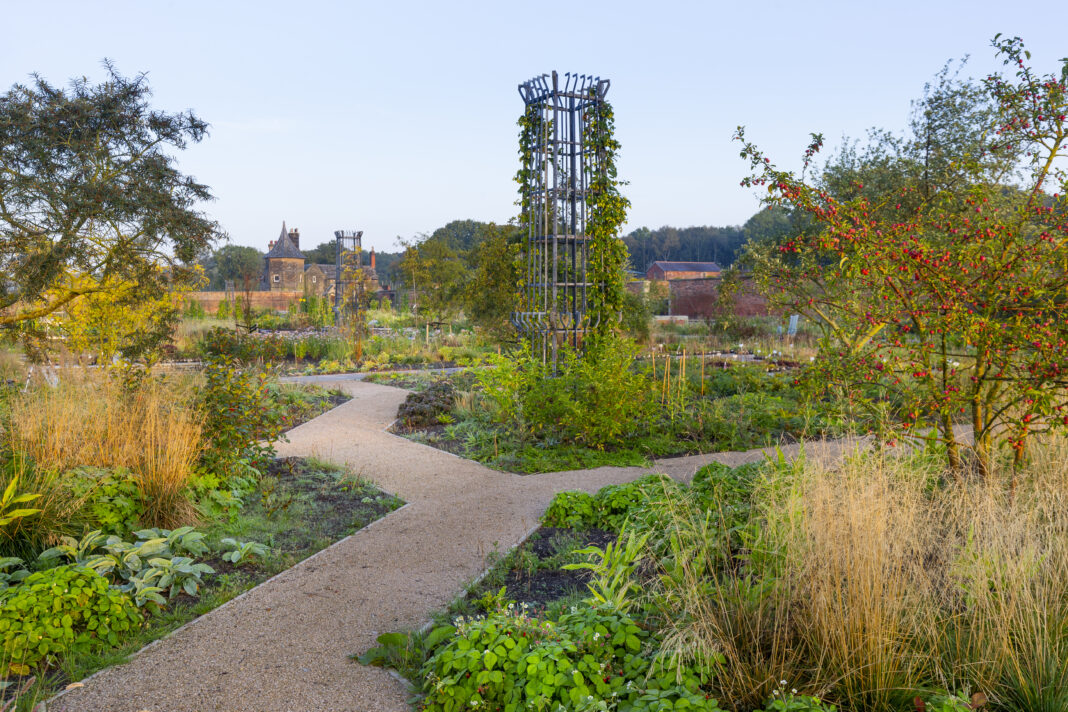Late February saw the welcome return of the ever-popular GLDA International Design Seminar.
Under the theme of PLAN Trees, PLANT Trees, PLANET Trees, the seminar’s 26th outing featured presentations from an international panel of guests exploring ideas surrounding the topic of Creative Design with Trees in our Landscape, Streetscape, and Gardens. In essence, the humble tree as a simple solution to the climate crisis.
The right tree, in the right place
In addition to being a researcher at the Swedish University of Agricultural Sciences, first speaker Henrik Sjöman is the scientific curator at the Gothenburg Botanic Garden. There, he describes himself as something of a black sheep. “I am not a botanist or a biologist, I am a landscape architect. When I look at trees I always wonder how we can use them. What is the capacity of the tree to grow in a space, is it capable of creating new ecosystems?” Henrik laments the fact that experts like him are often invited to participate in urban design too late in the process, usually asked to “create something beautiful for little or no money.” He believes the actual task should be to create a “diverse, sustainable and resilient tree population” in the urban environment. “Large mature trees have a better ability to contribute to ecosystem services than young trees, and a greater level of diversity helps to protect against diseases and infestations.” Henrik says we should learn from nature, and that “Nature is not a nice place for trees. They are constantly exposed to stress and must fight for space and resources. By understanding how they have developed different traits through enduring these different climates, we can apply these lessons to the trees we select for urban environments.” He looks to climates like the Rocky Mountains in the USA, and some of the driest forest systems in Europe to find species that grow in conditions that are comparable to an urban environment and are very drought tolerant. “Not many native trees can survive in the urban environment,” he says. “In a survey taken in Scandinavia and Canada, only 4 native trees were found to be good for urban planning. Non-native should not be thought of as invasive, we are not allowing them to become weeds.”
Act local, think global
“It’s very difficult for trees to combat all of the urban environment’s negative climate effects,” warns UCD professor and physical geographer Gerald Mills. “Cities are point sources of pollution at a global scale,” he says. “They produce 70% of Co2 emissions and are located in specific topographic situations where the effects of climate change will be most dramatic.” According to Gerald, the role of urban greening can offset at least some of these dramatic effects. He points to the city of Nîmes in France, which suffers from extremely hot summers. Here, they have created closed systems to allow citizens to access cooler areas during very hot spells. “Vegetation can have a big impact, as with more evaporation there is less heating. Green walls, green paving, green channels, and green roofing are all methods used to mitigate the effects.” He also points to New York City, where they have begun to treat trees like infrastructure, something central to the make-up of their urban environment.
In Gerald’s studies, he is endeavoring to create a tree inventory for Dublin City, to rank tree cover against comparable cities. “Dublin falls short,” he says, “with just 4.5% tree cover, compared to 15% in Cardiff and Helsinki at the higher end.” His project involved mapping out all of the trees in a 1 km square area of the city, part of the Strategic Pathways To Community-Led Greening project in Dublin 8. “In our case study, we asked people to engage with us. Dublin is a moderately green city, but there are significant variations in green cover across the urban landscape. Increasing green cover can help offset undesirable effects of urbanisation on the climate and personal health and wellbeing. This can be expanded further: activities at a local scale accumulate and have an impact on a global scale.”
Future-proofing landscapes with trees
The message coming out of the Netherlands, courtesy of landscape architect Thijs Dolders, was that we should select trees for biodiversity, not diversity. He argued that there is a trend towards native-ness in tree selection. These trees are perceived as good because they have always grown in our countries and they support our native insects and birds. “Urban environments are not kind to native trees,” he says, “and neither is climate change. We should select species that ‘could have made it here on their own’, that could have migrated naturally and can better withstand urban environments.”
Thijs also warns against monocultures: “Monocultures of one species can be visually pleasing, but the consequence is that they could all disappear in a very short time. By planting a lot of the same species, you create conditions that pests and diseases will thrive in.” Addressing the risk of importing these same pests and diseases with non-native trees, Thijs reassures us that, “In the professional nursery business every piece of plant material is checked. There is a chain of control. When they are moved abroad, everything is very strictly monitored.”
From edible woodlands to rooftop forests
 RHS Chelsea gold-medal winning garden designer Charlotte Harris stunned all in attendance with some examples of incredible upcoming designs. First up was a plan to create an urban forest on a rooftop in central London. “It must still be a functional space, but how can we take a woodland typology and map that over our conceptual approach?” she asks. “In places where there is heavy footfall we went for a ‘woodland edge’ approach, lighter canopies, less dense vegetation.” Over 100 trees will be planted. They will be planted at heights of 4-6 meters to counteract environmental conditions that would naturally keep trees cropped. Beneath the roof will be a rootable structure of 1m to 1.5m. “We spent a year developing the list of trees that would be planted. We also have to think carefully about irrigation because it must be sustainable. We’re using a Blue Roof system that collects rainfall and a water-wicking system that irrigates from below.”
RHS Chelsea gold-medal winning garden designer Charlotte Harris stunned all in attendance with some examples of incredible upcoming designs. First up was a plan to create an urban forest on a rooftop in central London. “It must still be a functional space, but how can we take a woodland typology and map that over our conceptual approach?” she asks. “In places where there is heavy footfall we went for a ‘woodland edge’ approach, lighter canopies, less dense vegetation.” Over 100 trees will be planted. They will be planted at heights of 4-6 meters to counteract environmental conditions that would naturally keep trees cropped. Beneath the roof will be a rootable structure of 1m to 1.5m. “We spent a year developing the list of trees that would be planted. We also have to think carefully about irrigation because it must be sustainable. We’re using a Blue Roof system that collects rainfall and a water-wicking system that irrigates from below.”
For the Hope Street Charity Project, a pioneering residential community for women and children failed by the justice system, Charlotte and her colleagues will design the courtyard garden. “What the women we spoke to wanted was a garden that felt like home, not institutional.” They studied trauma-informed design and settled on themes like Safety – Transparency and Trust – Choice & Context – Collaboration – Empowerment. “We thought a lot about what hope meant, symbols for Hope across the world in different cultures. Symbolically, the birch tree is a tree of hope, a pioneer, a symbol of renewal and rejuvenation. The layout was based on the cellular structure of a birch leaf and centered around a birch tree; that informed the general arrangement of the garden.
Alongside partner Hugo Bugg, Harris will also have a featured garden at RHS Bristol. Designed to evoke the experimental spirit of Victorian walled kitchen gardens, they have created a forest garden that holds a sustainable ecosystem.










